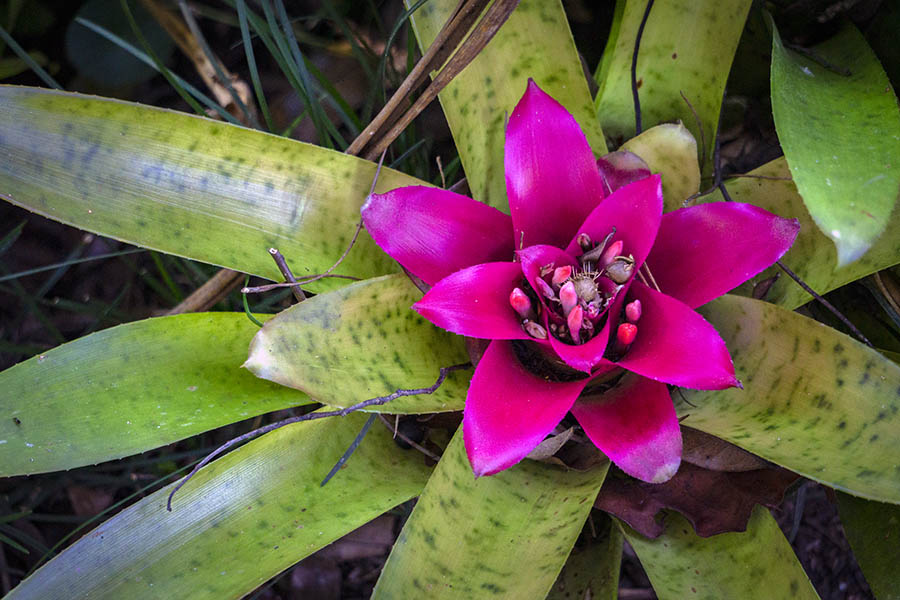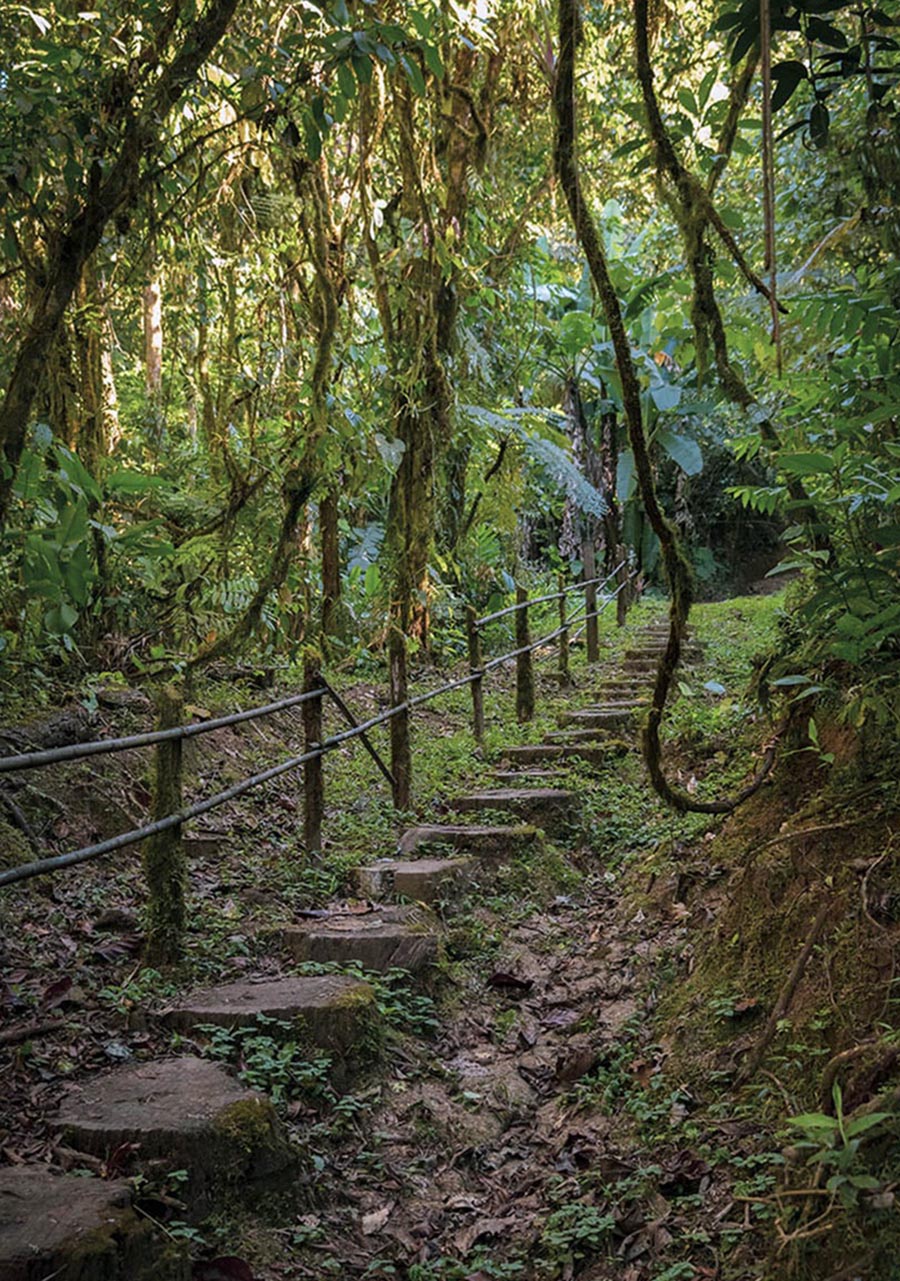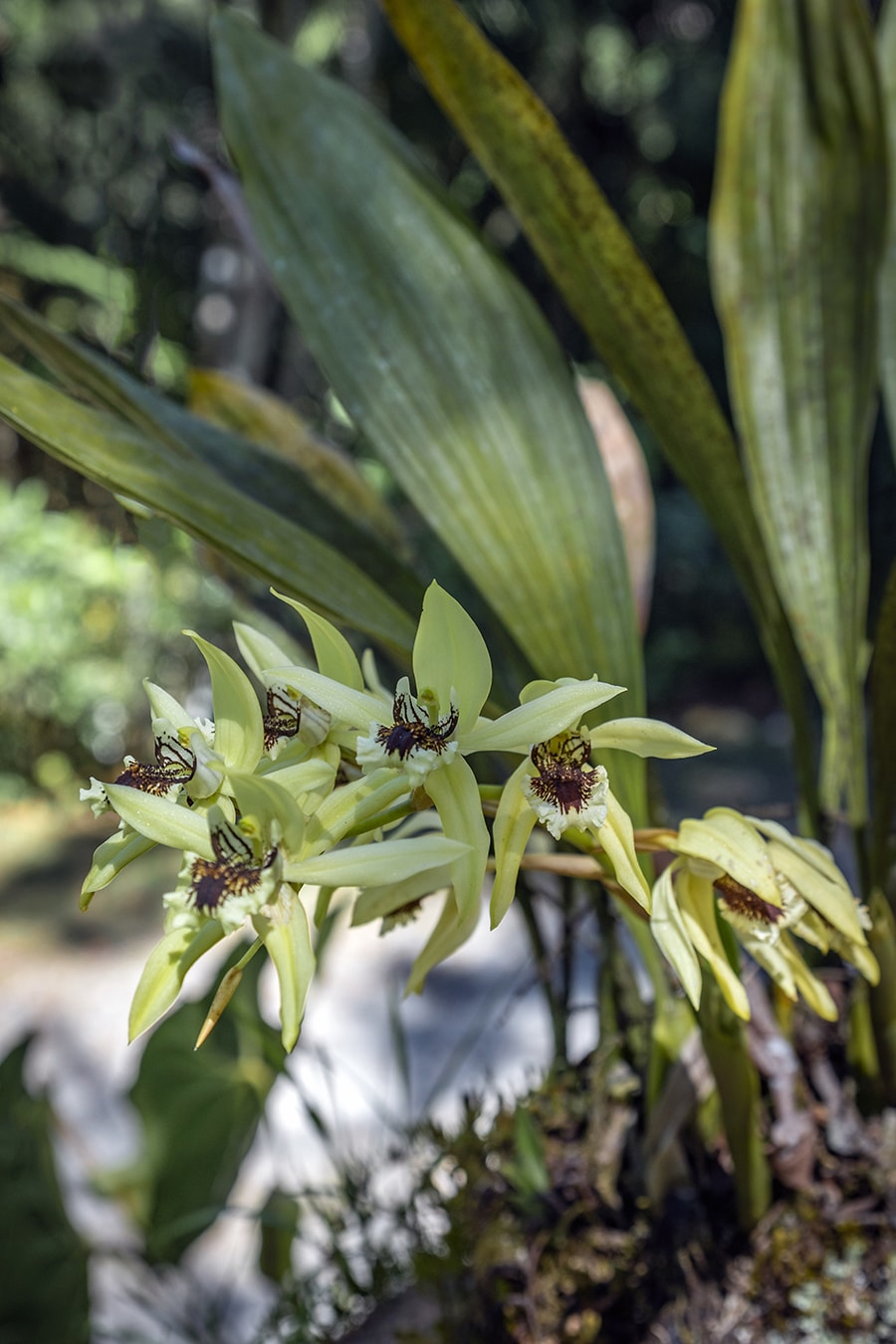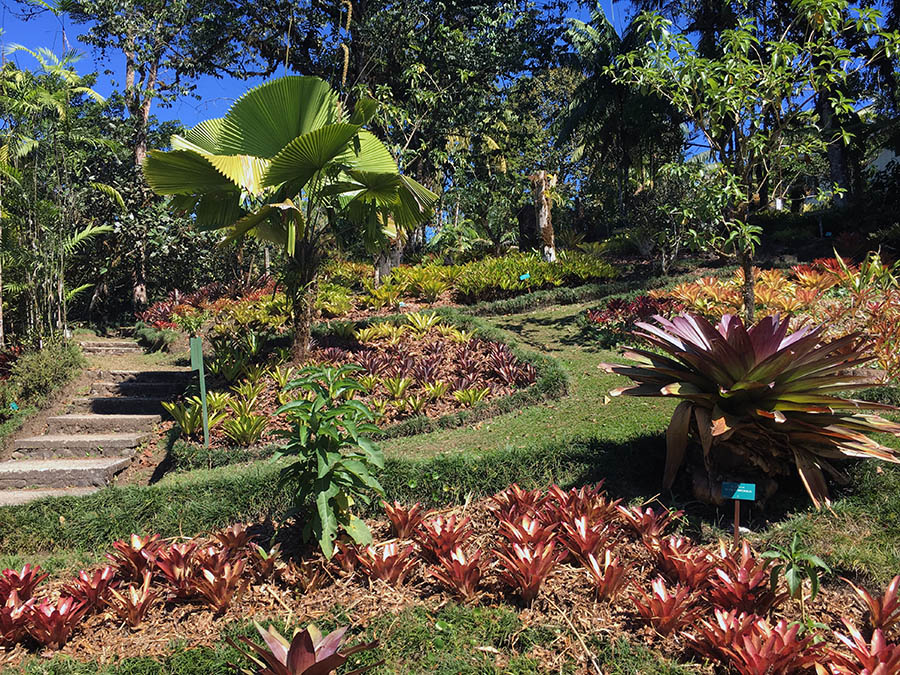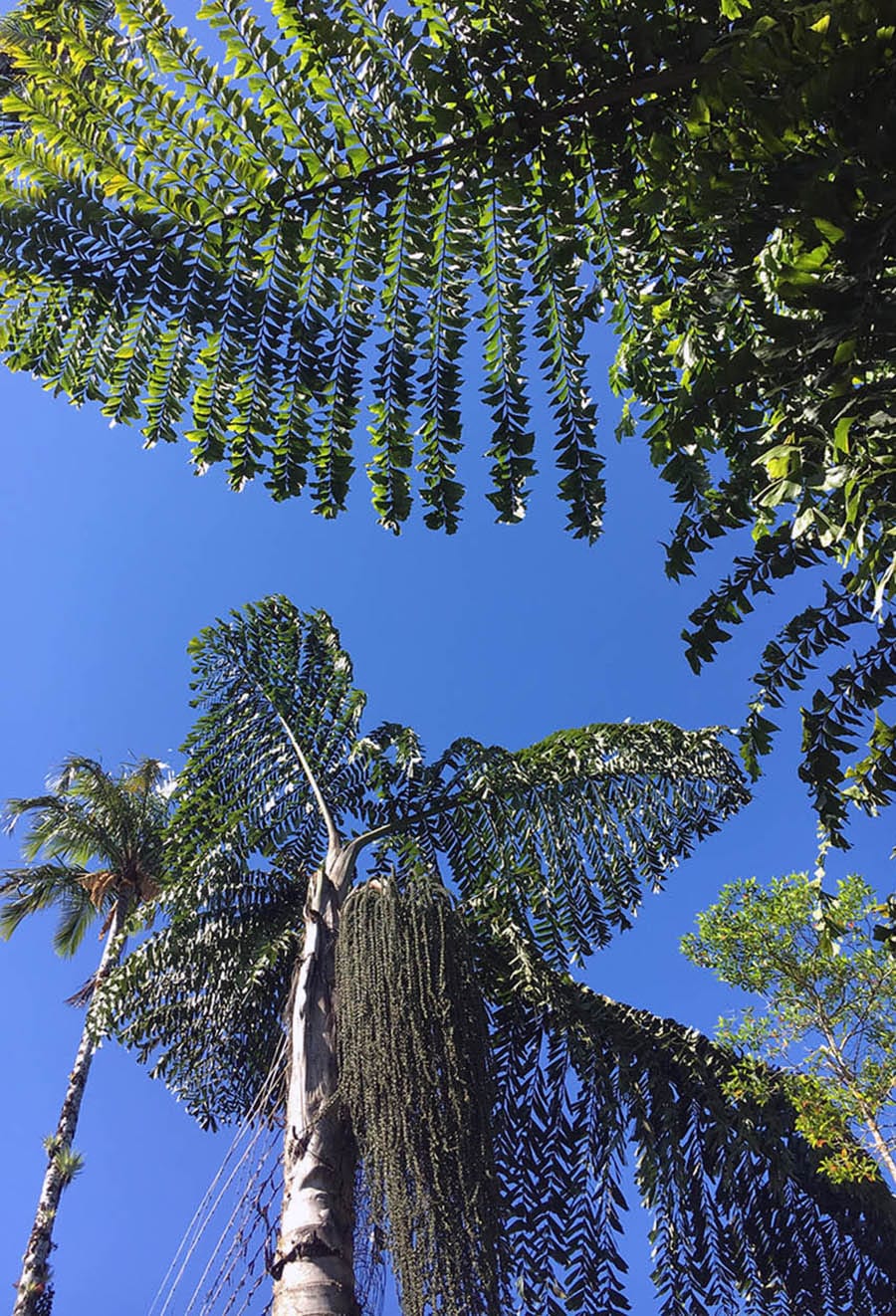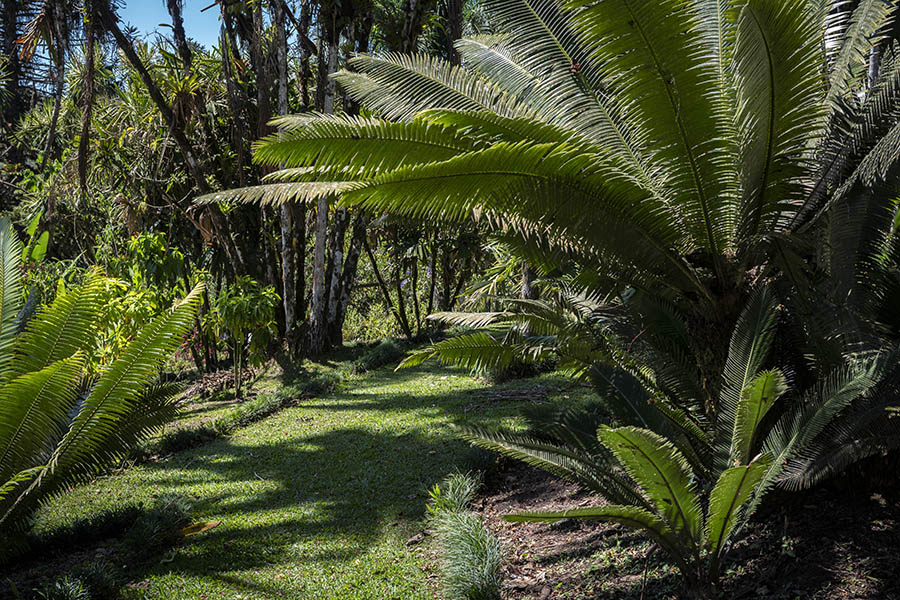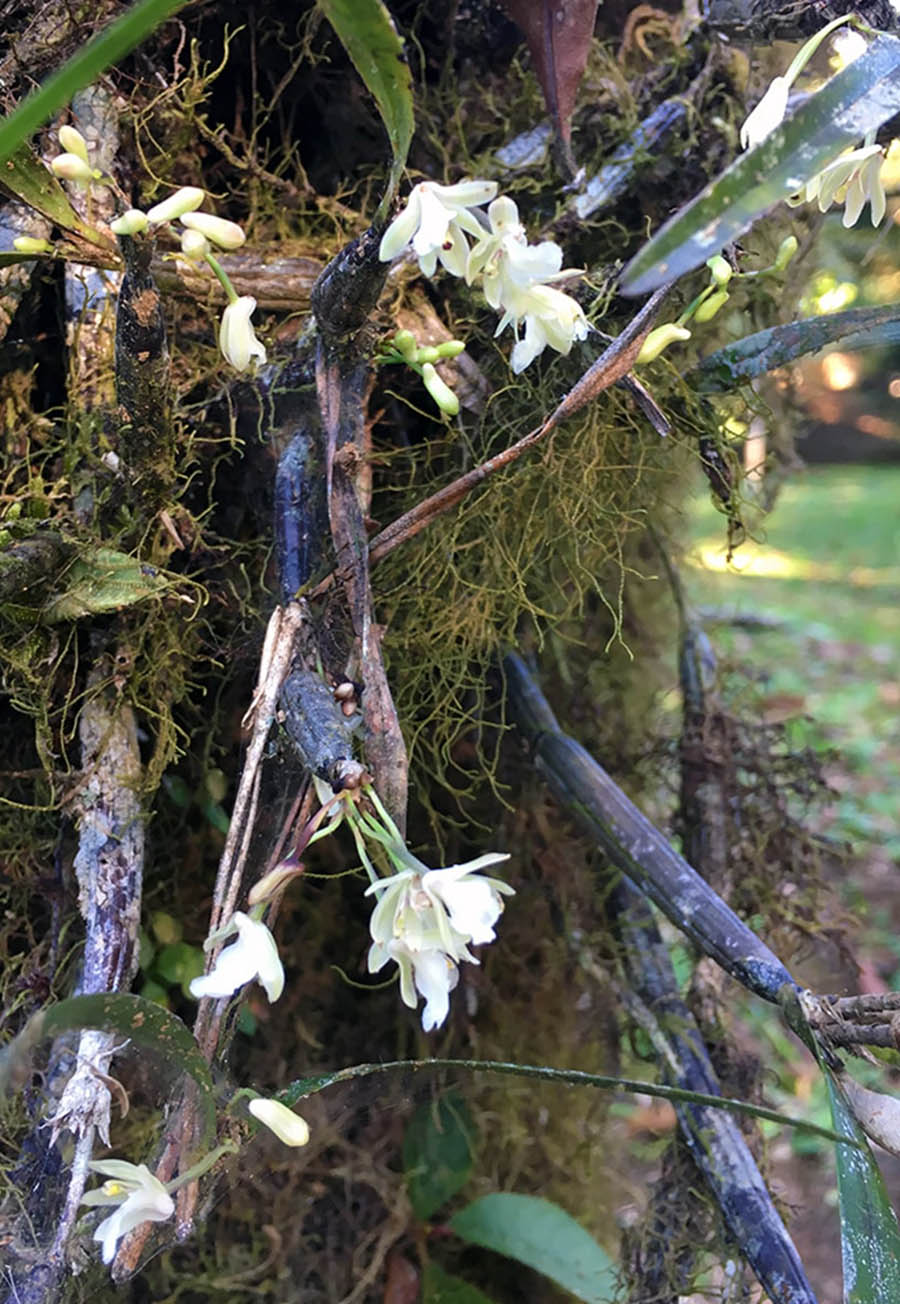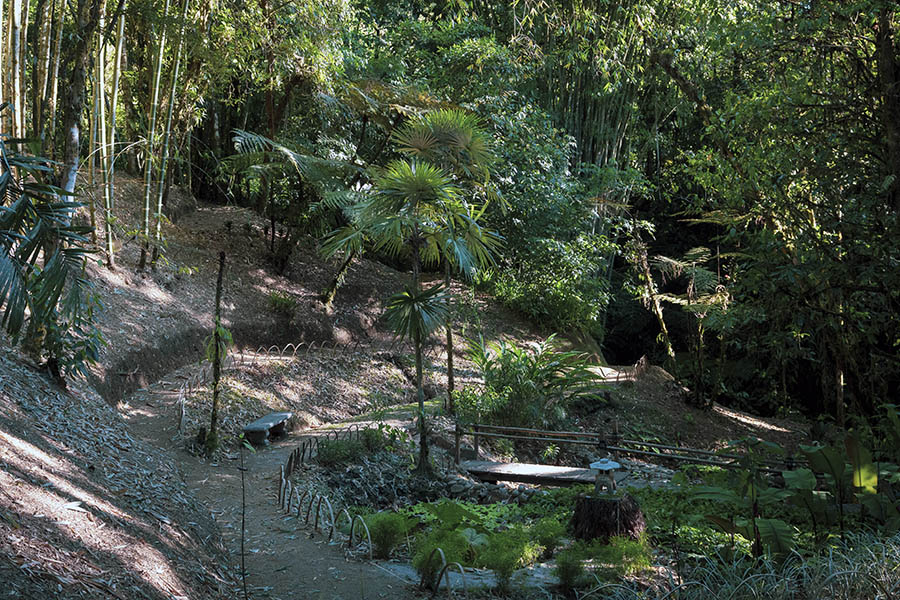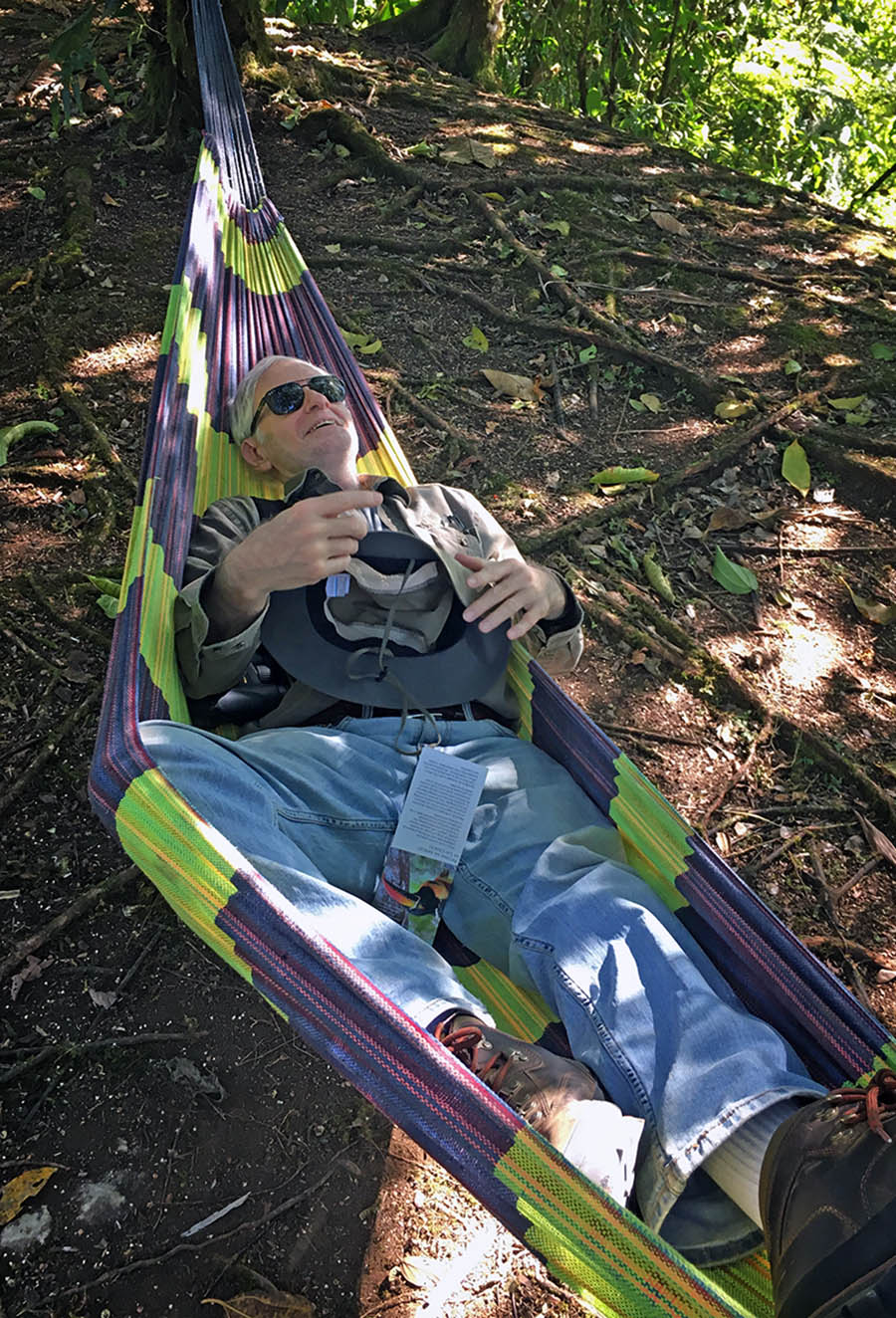What makes Wilson Botanical Garden worth a visit?
While planning our second trip to Southern Costa Rica, we stumbled upon “A Short History of Las Cruces Research Station and the Robert and Catherine Wilson Botanical Garden” written in one of the recent issues of “Amigos”, a semi-annual bulletin of the Las Cruces Biological Station. This insightful and entertaining article about the Wilson Botanical Garden’s origins and humble beginnings was written by Gail Hewson Hull, a passionate naturalist (here is her Foto Diarist blog) with close ties to the San Vito community and a former Director of Development and Visitor Services at the Biological Station.
The fascinating story, the vast collection of native and exotic tropical plants and the access to a large network of hiking trails through the primary and secondary forests, all make this 60-years old Botanical Garden and the Las Cruces Biological Station a major destination in the area. On our way to the Osa Peninsula, we decided to make a slight detour and spend a few days in this remote location by the Panamanian boarder.
The Special Mission of Tropical Botanical Gardens
The Wilson Botanical Garden may well be one of the most important botanical gardens in Latin America, and globally. A recent study “Ex-situ conservation of plant diversity in the world’s botanic gardens” by the University of Cambridge revealed that botanical gardens are predominantly located in temperate climate zones. However, an estimated three quarters of species absent from living botanical collections are, in fact, tropical in origin. These findings underscore the importance of the tropical plant collections, like the Wilson Botanical Garden, for conservation of floral biodiversity.
Wilson Botanical Garden’s Conservation Ecosystem
The Wilson Botanical Gardens and Las Cruces Biological Station are located near San Vito (300 km/6 hour drive) south of the capital San José) in the remote municipality of Coto Brus bordering Panama. This is a charming settlement with enduring Italian roots (Italian is still being taught at public schools here!). The town was founded in the late 1940-s by a group of “pioneers” attracted from Italy by the prospects of coffee growing in the area.
Situated on 10-hectares (~ 25-acres) at the elevation of 3,900 ft (1,200 m) above sea level within the Fila Cruces coastal mountain range, Wilson Botanical Garden boasts over 3000 plant species and one of the largest collections of palms in the world (over 600 varieties). The Biological Station and the Garden contribute to the AMISTOSA Biological Corridor, which connects the Osa Peninsula and the La Amistad International Park (PILA) in the Talamanca Mountains. Due to its proximity to La Amistad and incredible biodiversity, Las Cruces and Wilson Botanical Garden were declared a part of the Biosphere Reserve by UNESCO in 1983.
Examining the local tree cover changes over the recent 60 years, it becomes painfully clear that the Las Cruces Biological Station and Wilson Botanical Garden represent a green oasis in this largely deforested territory of Southern Costa Rica.
Early Days as a Private Garden and Commercial Nursery
The property was purchased in 1960 by horticulturist and tropical plant aficionado Robert Wilson and his wife Catherine. Somewhat ironically, Wilson Botanical Garden was initially created as a private botanical garden (with visitors in mind) and commercial nursery (for income). There was even an early attempt to cultivate tea for sale, which did not pan out in the coffee-growing community of San Vito.
Garden’s Layout and Plant Collection
The world-renowned Brazilian landscape designer Roberto Burle-Marx, who was called “the Picasso of landscape design” for his artistry, and had a disciplined knowledge of botany, and provided the initial garden design concepts and several plants (some of which are still a part of the current collection).
“Any country which maintains such a Botanical Garden as this must be proud of its contribution to culture and education”
Roberto Burle-Marx, Rio de Janeiro, March 24, 1977
The Wilson Botanical garden harbors a vast collection of native and exotic plants from all over the world with a strong emphasis on Palms (Arecaceae), Bromeliads (Bromeliaceae), and other ‘showy’ cultivated families such as Heliconias (Heliconiaceae) and Gingers (Zingiberaceae and Marantaceae).
By design, the Bromeliad Hill and other central areas of the garden are heavily “manicured”, whereas some of the more peripheral areas are maintained in a more natural semi-wild form, blending well with the surrounding forest. This map of Wilson Botanical Garden shows its layout and the locations of different plant collections.
Visitor Information Area
On the hillside between the dining hall, the library and the reception building across from the parking lot, you will see eight large panels within the recently constructed Visitor Information Area. This colorful interpretive display is the work of artist Deirdre Hyde, who has created similarly impressive decorative and educational pieces for several other national parks in Costa Rica. The original art of the exhibit blends with traditional indigenous patterns and takes you through the history of the Coto Brus region and Las Cruces Biological Station, the adventures of early settlers. The scientific content focuses on plant collections of the Wilson Botanical Garden and nature conservation.
Palms
Wilson Botanical Garden’s palm collection, one of the largest in the world, is its pride and, as one palm expert put it, “the backbone of its beauty and elegance”. From about 2600 species comprising this large family (Arecaceae or Palmae, not to be confused with cycads or even cyclanths!), about 90 are native to Costa Rica.
There is no separate area for Wilson Botanical Garden palm collection, which now covers over 600 different varieties. Instead, you will enconter palm trees growing nearly on every corner: from the Ruffled fan palm (Lacuala grandis) in the Bromeliad Hill Garden to the giant King Kong Fishtail Palm trees (Caryota gigas) towering over the lookout (the Mirador). Within the Banana section of the Garden, we found a larger group of Costa Rica-native walking palms or cashapona (Socratea exorrhiza) standing on peculiar stilt roots. Climbing the Canopy Tower opened the view over the iconic Pigafetta palms silhouetted against the sunset or simply the blue sunny sky.
On the way to the greenhouse back in the garden, we spotted a sizable Traveler’s Palm (Ravenala madagascariensis), a national tree of Madagascar. Despite its name and some resemblance, this remarkable plant with banana-like leaves, is not really a palm tree. It is a relative of the South African “bird-of-paradise” plant family and is believed to use non-flying mammals such as nectar-feeding lemurs for pollination.
Bromeliad Hill Garden
Surrounding Casa Wilson, which recently underwent significant repairs after 50 years of sporadic damages by weather and termites, there is the terraced Bromeliad Hill Garden. It has been the centerpiece of the “formal” part of the Wilson Botanical Garden, ever since Burle Marx visited Robert and Catherine Wilson during the “conceptual design” phase in 1962. Follow the grassed path down the Bromeliad Hill, and you will walk past two of his signature plants, the ruffled fan palm and the massive imperial bromeliad (Vriesea imperialis).
The Pollinator Garden located behind the arid plants collection on Bromeliad Hill is one of the more recent additions, which was initially designed as a Hummingbird Garden. Later it was cheerfully “re-branded” and populated with mostly native plants growing in a concentric pattern around the old water fountain that was originally installed by Robert Wilson near the Wilson house. This flowering display is a living and breathing magnet for local bees, butterflies, hummingbirds and other nectarivores (such as beetles and bats).
Cycads
There is a small thriving collection of Cycads from around the world just behind Casa Wilson: Cycas from Asia and Australia, Dioon spp. from Mexico and South America and a few African Encephalartos. We also spotted the Costa Rica’s native Zamia fairchildiana displaying spectacular cones of both types. If you venture out to the primary forest trails at Las Cruces Biological Station, you might run into much larger samples of this cycad (like this over 10-foot tall Zamia fairchildiana plant photographed by the late Wilson Botanical Garden director and renowned Costa Rican botanist Luis Diego Gomez https://fotodiarist.com/2016/07/02/finding-at-las-cruces-the-impartial-calm-of-nature/. Learn about all other Zamia species growing in Costa Rica here.
Orchids
While orchids are not a specialty of Wilson Botanical Garden, you can still find quite a few orchids throughout Las Cruces Biological Station. At least 130 orchid species have been identified within its boundaries by Fabián Alb. Sibaja Araya. Descriptions and photographs of over 50 different genera are part of this illustrated inventory of its orchidaceous flora Orchids of Las Cruces Biological Station. For orchid aficionados, I would recommend a trip to the Lankester Botanical Garden in Cartago, near San Jose. It has a vast Orchidaceae collection and is credited for its prominent role in tropical orchid research and conservation.
There are a few orchids with large showy inflorescences growing just behind the Cycad collection. In the Banana area, we spotted elegant Scaphyglottis mesocopis (a native orchid of Costa Rica and Panama) growing around a tree trunk (these are blossoming between Jan-Mar and Nov-Dec).
Heliconia Display
The Wilson Botanical Garden’s heliconia collection is a short walk down the hill from Casa Wilson. The layout and design of the Heliconia Garden have been completely overhauled in the recent years. The Heliconia plant collection has also been expanded and currently covers over 100 species and varieties (of roughly 220 species spread throughout Central and South America and some Pacific Islands) of these majestic neotropical plants with showy flowers. This section of the Garden dotted with colorful splashes of erect and pendant heliconia inflorescences are frequented year around by local hummingbirds.
The Mirador and Las Positas Water Garden
The far corners of the Garden, like the Mirador and the Water Garden, can be easily overlooked. Surrounded by giant King Kong palm trees, the Lookout is a perfect spot for getting a sense of garden’s elevation and for taking a power nap on a late afternoon.
On the way back from the Mirador, we made a right turn into a path zig-zagging through the giant Bamboo “forest”, which was planted by Robert Wilson some 40-45 years ago. Hidden from the plain view in a shaded valley decorated with a natural water pools and benches, was the newly created Water Garden. This divine spot in the garden was just recently reclaimed from a prolonged “occupation” by invasive species, such as Velvet Pink Banana (Musa velutina) and Beehive Ginger (Zingiber spectabile) vegetation and repopulated by Costa Rican native wetland and aquatic plants. Since its inception, the water garden became one of the favorite spots for local birdwatchers.
How Much Time to Spend?
Although Wilson Botanical Garden is relatively compact and most of the plant collections can be covered in a single morning or afternoon, one should plan to spend at least one whole day (the Garden is open between 8 am and 5 pm) for more than a cursory glance. This should give you enough time to climb the Canopy Tower and even take a short hike (~2 hours) along the Rio Java trail (one of the numerous hiking trails through the primary and secondary forest which are maintained by Las Cruces Biological Station). Or you could just take it slowly and do some heavy relaxing now and then in the shade of the canopy. Bliss …

